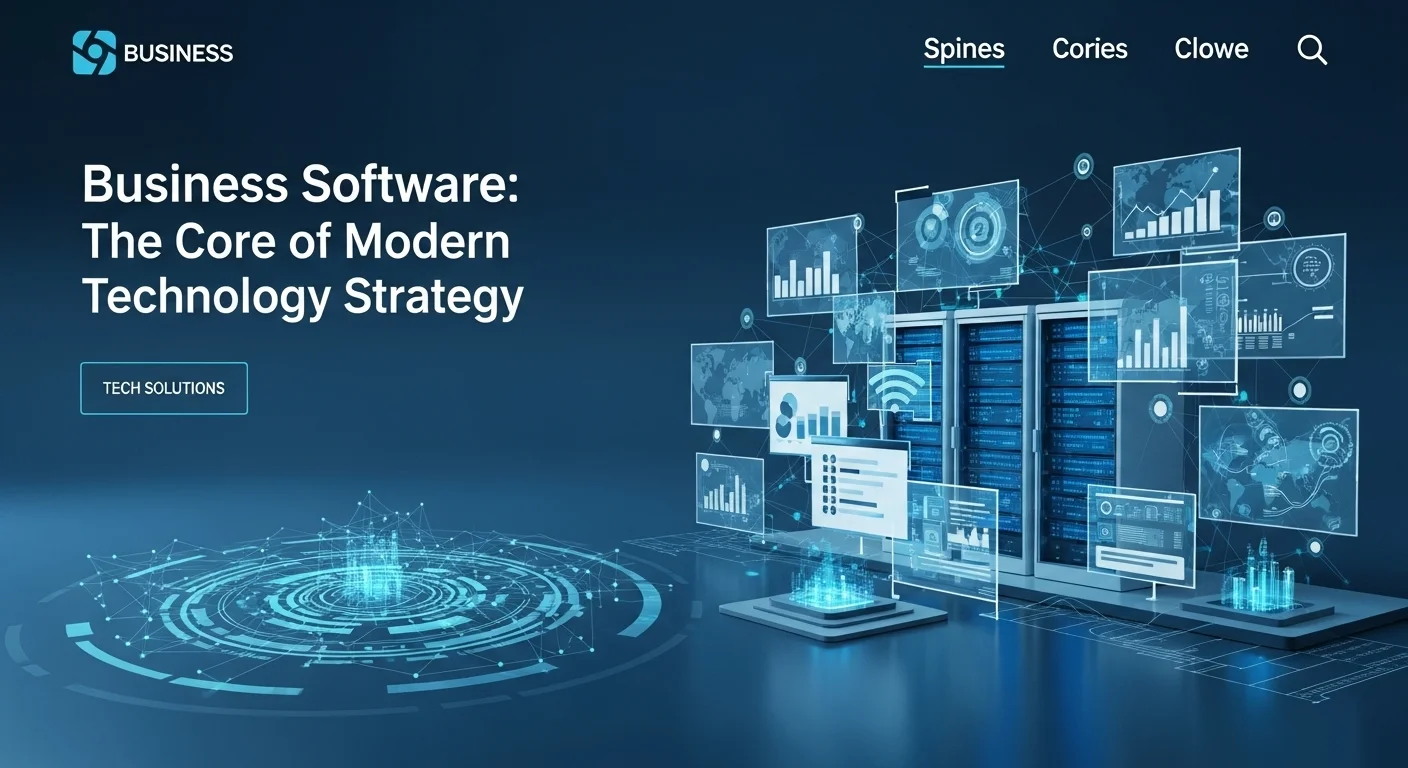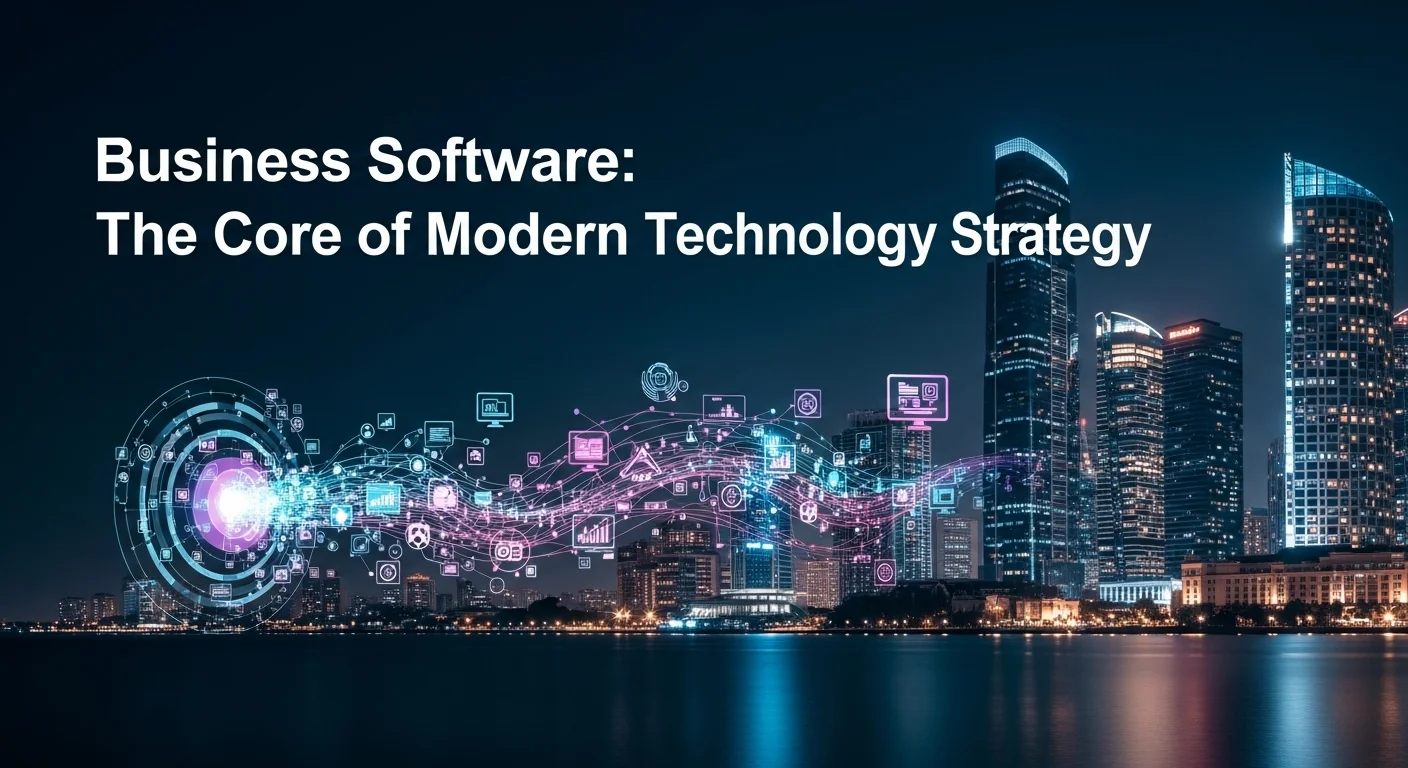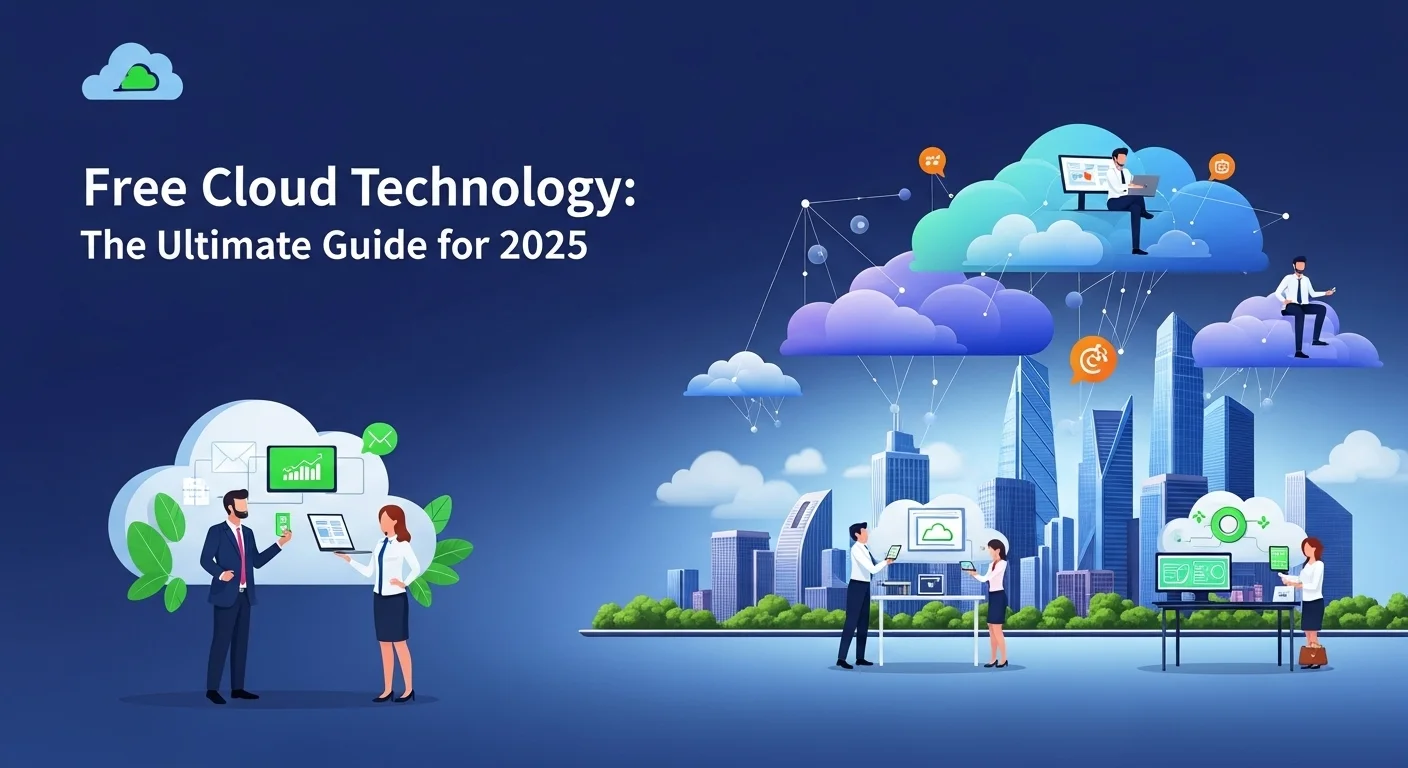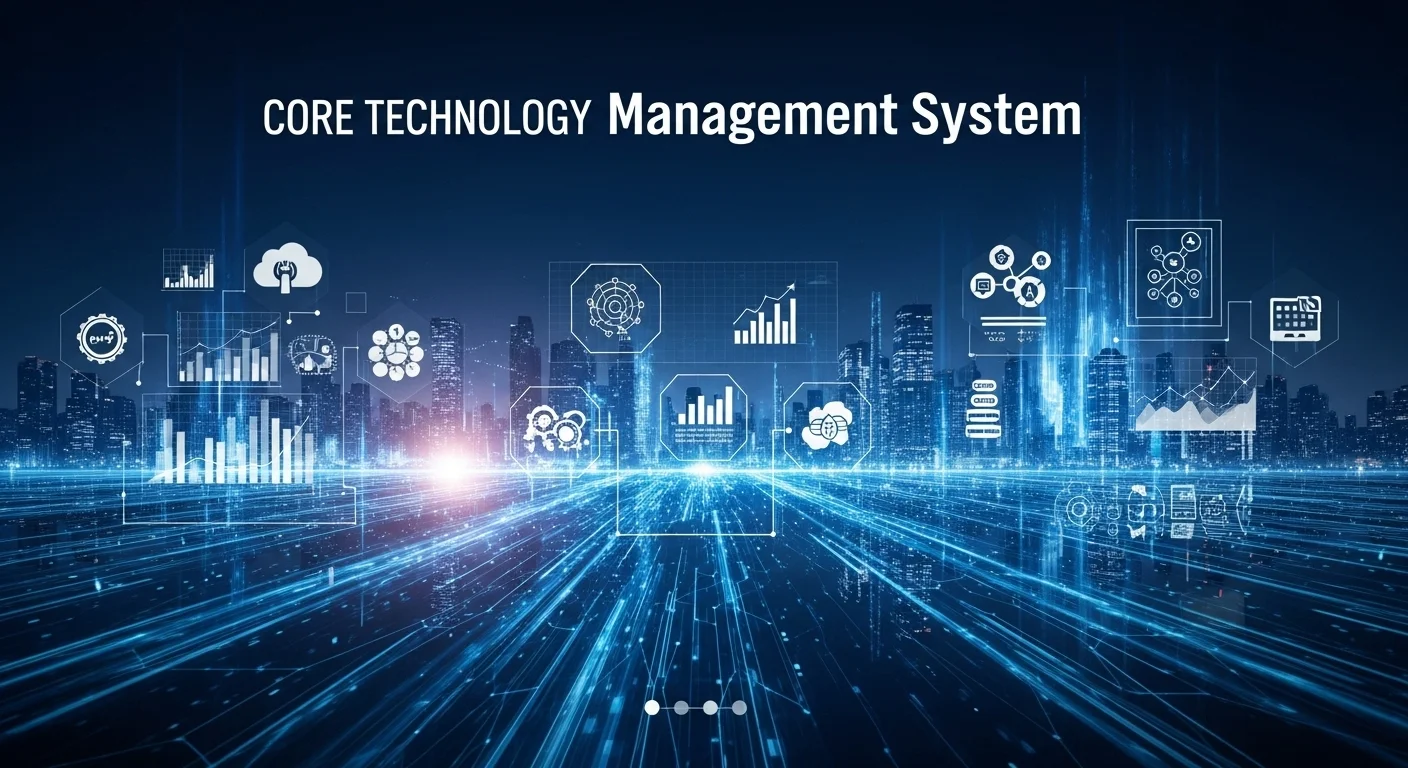Your Guide to Business Software: How to Choose and Use the Right Tech

Executive Summary
In today's fast-paced world, the right software isn't just a tool—it's the heart of your business strategy. I've worked with countless companies, from startups to large enterprises, and I've seen firsthand how transformative the right technology can be. This article is my personal guide to the world of business software. We'll cut through the jargon and talk about what really matters: how these platforms can make your team more efficient and your business more competitive. We'll dive into the game-changing impact of Artificial Intelligence, looking at how smart tools are creating amazing new opportunities for growth. We'll also cover the shift to cloud-based solutions that offer incredible flexibility and power. This is for the business leaders and tech lovers who want a straightforward guide on everything from ERPs and CRMs to making smart choices about cybersecurity and implementation. My goal is to give you the insights I've gathered over the years to help you harness technology for real, measurable success.
Table of Contents
What is Business Software and why is it so important today?
In my experience, the term 'business software' can sound a bit intimidating, but the concept is simple. It's any application or program designed to make work easier, faster, and more effective. Think of it as the digital engine of your company. For years, I've seen it evolve from a simple helper to the central nervous system of modern businesses. It’s the foundation on which you build a competitive edge, find new efficiencies, and hit your strategic targets. Whether you're managing customer details, tangled supply chains, or company finances, the right software is the silent partner working tirelessly behind the scenes.
The variety of tools out there is huge, but they generally fall into a few key categories. You have Enterprise Resource Planning (ERP) systems, which I like to call the 'central hub' because they connect core operations like finance, HR, and manufacturing. Then there's Customer Relationship Management (CRM) software, which is all about understanding and improving how you interact with your customers. I've helped many clients unlock incredible insights with a good CRM. Other vital tools manage supply chains (SCM), human resources (HRM), and data analysis (BI). The real magic happens when these systems talk to each other, creating a seamless flow of information that gives you a complete picture of your organization.
The Evolution: From On-Premise to the Cloud
I remember the early days of business software. It was clunky, expensive, and lived on a big server in a back room. You had to make a massive upfront investment and have an IT team on standby just to keep it running. Then the internet changed everything, leading to the rise of cloud-based business software. This was a true game-changer. Delivered as Software-as-a-Service (SaaS), it meant companies could subscribe to powerful tools through a web browser instead of buying them outright. Suddenly, small and medium-sized businesses could access the same high-level technology as giant corporations. I've seen this level the playing field for so many of my clients. The benefits are clear: lower costs, the ability to scale up or down as needed, automatic updates, and access from anywhere. In our new world of remote work, that flexibility isn't just a perk; it's a necessity.
The AI Revolution in Business Software
The most exciting shift I'm seeing right now is the integration of Artificial Intelligence (AI). AI isn't science fiction anymore; it's a practical feature being built into almost every business tool. The hunt for the best AI software for business is on because everyone wants to get ahead. These new AI-powered business tools can automate incredibly complex tasks, offer surprisingly accurate predictions, and personalize customer experiences like never before. For instance, I've seen AI algorithms analyze sales data to forecast future trends with uncanny accuracy, helping businesses optimize their inventory. In marketing, AI can create customer segments so precise that campaigns become dramatically more effective. In customer service, smart chatbots can handle common questions around the clock, letting human agents focus on the tougher problems. This infusion of intelligence makes business AI software a force for transformation, helping people make smarter decisions, faster. It’s all about enhancing human skills, not replacing them, which ultimately leads to a more intelligent and capable workforce.
Core Benefits and Strategic Importance
So, why should you care? Because the right software has a direct impact on your company's health and ability to compete. Here are the core benefits I always highlight:
- Boosting Efficiency and Productivity: By automating boring, repetitive tasks like data entry, software frees up your talented people to focus on creative and strategic work. This is one of the quickest ways to see a jump in productivity.
- Making Data-Driven Decisions: Modern software, especially tools with analytics built-in, pulls all your data into one place. This gives leaders clear, real-time dashboards to make informed choices based on facts, not just gut feelings.
- Building Stronger Customer Relationships: A good CRM gives you a complete view of every customer, allowing for more personal and effective service. AI-enhanced systems can even predict what a customer might need next.
- Scaling for Growth: Modern cloud-based business software is built to grow with you. As your business expands, you can easily add more users or features without a massive IT project. This agility is key to long-term growth.
- Improving Security and Compliance: Good software providers invest heavily in protecting your data. They also keep up with regulations like GDPR, which takes a huge compliance weight off your shoulders.
In short, business software is the essential backbone of any modern company. Its move to the cloud and the exciting addition of AI have opened up a world of possibilities. For any business leader looking to succeed today, investing wisely in the right software isn't just a good idea—it's absolutely essential. The search for the best AI-driven tools is a continuous journey, but understanding these fundamentals is the first and most important step.

A Complete Guide to Choosing and Using Business Software
Finding your way through the maze of business software can feel overwhelming, but with a clear strategy, it's entirely manageable. It's a blend of technical know-how and solid business sense. My approach has always been to treat it as a lifecycle—from selection to daily use—that aligns technology directly with your business goals. This ensures you get a real return on your investment, not just another piece of software.
Phase 1: Figuring Out What You Need and Picking a Partner
The first step, and the one people often rush, is to look inward. Before you even Google a single product, you have to understand your own business's pain points. I always start by asking my clients: What processes are slowing you down? What are you trying to achieve—cut costs, make customers happier, speed up sales? Talk to people in every department. The view from sales is very different from the view from accounting. Your goal is to create a detailed wish list that outlines the 'must-have' features and technical needs.
With that list in hand, you can start looking for a vendor. This is where you need to be thorough. Here's my personal checklist for evaluating options:
- Functionality: Does it actually do what you need it to do? Be honest about what's essential versus what's just 'cool.'
- Technology: Is it a true cloud-based solution that offers flexibility? How well does it play with others? I always look for a solid API, which is the technical key to connecting it with the software you already use.
- Reputation and Support: Do your homework. Look up the vendor, read real customer reviews, and ask for stories from businesses like yours. What happens when something goes wrong? Good support is priceless.
- Total Cost of Ownership (TCO): The price tag is just the beginning. I've seen hidden costs sink a project. Factor in setup, training, support, and any customization fees.
- Future-Proofing: Your business will grow, and your software should grow with it. Ask about their plans for the future. Are they investing in new tech like AI? This is vital when considering AI-powered business tools.
When you're specifically looking at artificial intelligence, you have to dig even deeper. It's not enough for a vendor to say they 'use AI.' I press them for details. How does your business AI software make its predictions? What data does it need? How does it learn? Finding the best AI platform for your business often means trying out a couple of options to see which one delivers real, tangible results for you.
Phase 2: Implementation and Getting Your Team Onboard
Buying the software is easy. Getting it to work is the real project. A common pitfall I see is treating implementation as just an IT task. The people who will use the software every day must be involved from the very beginning to make sure it's set up to match how they actually work.
A typical implementation looks something like this:
- Project Planning: Define the scope, timeline, and budget. Everyone needs to know who's responsible for what.
- System Setup: Work with the vendor to tailor the software to your needs. My advice is to stick with the standard features as much as possible and only customize when you absolutely have to.
- Data Migration: This can be the trickiest part. You need a clean, organized plan to move your information from the old system to the new one.
- Integration: Connect the new software to your other essential tools, like your accounting or e-commerce platforms.
- Testing: Test, test, and test again. Have your actual users try it out to find any bugs or confusing parts before you go live.
- Training and Launch: Never skimp on training. A well-planned launch, with extra support from the vendor in the first few weeks, makes all the difference.
Change management is all about the people. It's natural to resist new things. A good strategy involves communicating the 'why' behind the change, involving your team in the process, and providing tons of support. This is what separates a successful launch from a frustrating one.
A Deeper Look: Cloud vs. On-Premise and the Rise of AI
For most businesses I work with today, the cloud versus on-premise debate is over. The cloud has won. Cloud-based business software (SaaS) offers clear advantages in cost, scale, and access. However, some companies in very specific industries might still use private or hybrid clouds for extra control over their data. A hybrid approach simply mixes public cloud services with a private, on-premise setup.
Technically speaking, AI is changing how software is built. Modern AI business software uses complex systems like machine learning (ML) and natural language processing (NLP). For example, a CRM with AI might use NLP to understand the tone of a customer's email and ML to predict which sales leads are most likely to close. When you're comparing AI software for your business, try to understand the tech behind it. The best AI platforms don't just give you an answer; they can explain how they got there, which helps build trust with your team.
Resources and How to Compare
You don't have to do this alone. There are great resources out there. Research firms like Gartner and Forrester offer deep dives into different vendors. Peer review sites like G2 and Capterra have honest, user-written reviews that I find incredibly valuable for getting a real-world perspective. Industry forums can also be a goldmine of specific advice.
When you're ready to compare your top choices, I recommend creating a simple scoring sheet. List your criteria—functionality, cost, AI features, etc.—and give each one a weight based on what's most important to your business. This helps you make an objective choice and find a technology partner who can genuinely support your vision for the future.

Tips and Strategies to Get the Most from Your Business Software
Getting your business software up and running is just the start. To really see a return on your investment, you need to think of it as an ongoing relationship. I've found that the most successful companies are the ones that constantly look for ways to improve their tech experience. This means managing your software smartly, putting cybersecurity first, and focusing on getting your team to actually use the tools. Here are some practical tips and strategies I've learned over the years.
Best Practices for Managing Your Software
Thinking about your software's entire lifecycle, not just the purchase, is key to optimizing its performance and cost.
- Conduct Regular Check-ups: At least once or twice a year, take a look at all the software you're paying for. Are you using all the licenses? Is a tool still serving its purpose? I've saved clients thousands of dollars by identifying 'shelfware'—software that's paid for but never used.
- Keep Things Updated: Vendors release updates for a reason: new features, better performance, and critical security patches. With cloud-based business software, this is often automatic, but it's still smart to know what's new so you can take advantage of it.
- Create a Rulebook: Establish clear rules for how new software is requested, approved, and rolled out. This helps you avoid 'shadow IT'—when departments buy their own apps—which can cause huge security and data headaches down the line.
- Encourage Feedback: Your team uses these tools every day. Create an easy way for them to share what they like, what they don't, and what could be better. This feedback is pure gold for making improvements.
Making Cybersecurity a Top Priority
Your business runs on software, which means your data is in that software. Protecting it is non-negotiable. I've seen firsthand the damage a security breach can do.
- Use a Layered Defense: There's no single magic bullet for security. You need multiple layers of protection, including firewalls, antivirus on all devices, and strong access controls within the software itself.
- Control Who Accesses What: I live by the 'principle of least privilege.' Users should only have access to the data and features they absolutely need for their job. Always use strong passwords and enable multi-factor authentication (MFA). It's one of the most effective security measures you can take.
- Encrypt Your Data: Make sure your sensitive business and customer data is encrypted, both when it's stored ('at rest') and when it's being sent over the internet ('in transit'). Any reputable cloud software provider should offer this standard.
- Train Your People: Your employees are your first line of defense. Regular training on how to spot phishing scams and handle data safely is essential. A well-informed team is your best security asset.
- Vet Your Vendors: Before you buy any new software, especially an AI tool that will handle a lot of data, check out the vendor's security credentials. Ask for certifications like SOC 2 or ISO 27001.
Strategies for Getting Your Team Onboard
The success of any software depends entirely on whether people use it. I've seen expensive, powerful systems fail simply because nobody wanted to learn them.
- Get Leaders Involved: Adoption starts at the top. When executives actively use and talk about the new software, it shows everyone else that it’s important.
- Offer Ongoing Training: A single training session at launch is not enough. Offer regular refreshers, create a help library with videos and guides, and make sure people know who to ask for help.
- Explain the 'Why': Don't just show people how to click buttons. Explain why the new tool is an improvement. How will it make their job easier? How will it help the company succeed?
- Track Your Success: Define what success looks like and measure it. For a CRM, that might be faster response times to customer inquiries. Sharing these wins proves the software's value and builds momentum. This is especially true when validating the choice for the best AI business software.
Looking to the Future: Staying Ahead of the Curve
The tech world moves fast. A forward-thinking strategy helps you stay prepared for what's next.
- Embrace Automation: Look for opportunities to automate more processes using a mix of AI, machine learning, and other tools. The goal is to free up your team for more valuable work.
- Explore Low-Code/No-Code: These platforms allow people with few technical skills to build simple applications, empowering them to solve their own problems without waiting for the IT department.
- Keep an Eye on AI's Evolution: AI is advancing at an incredible pace. Watch for developments in areas like generative AI (which can create content) and agentic AI (which can perform tasks on its own). The next wave of business AI software will be even more powerful. For great insights on what's coming, I often recommend resources from events like the Gartner IT Symposium.
- Focus on Integration: The future is less about one giant system that does everything and more about a collection of specialized, best-in-class apps that work together seamlessly. This makes a strong integration capability essential for any software you choose.
By following these strategies, you can turn your technology from a simple expense into a powerful engine for innovation and growth. The key is to stay agile, secure, and focused on your people, ensuring your tech ecosystem grows right alongside your business.
Expert Reviews & Testimonials
Sarah Johnson, Business Owner ⭐⭐⭐⭐
As a small business owner, I found this a great starting point. It's solid information, but I was hoping for a few more real-world examples I could apply directly to my shop. Still, a very helpful read!
Mike Chen, IT Consultant ⭐⭐⭐⭐
This is a useful article on business software. It helped me frame some concepts for my own clients, and I appreciate the straightforward, no-jargon approach. Well done.
Emma Davis, Tech Expert ⭐⭐⭐⭐⭐
An excellent and comprehensive article! It covers all the key aspects of business software without being overwhelming. This was genuinely helpful for my work. I've already shared it with my team.



